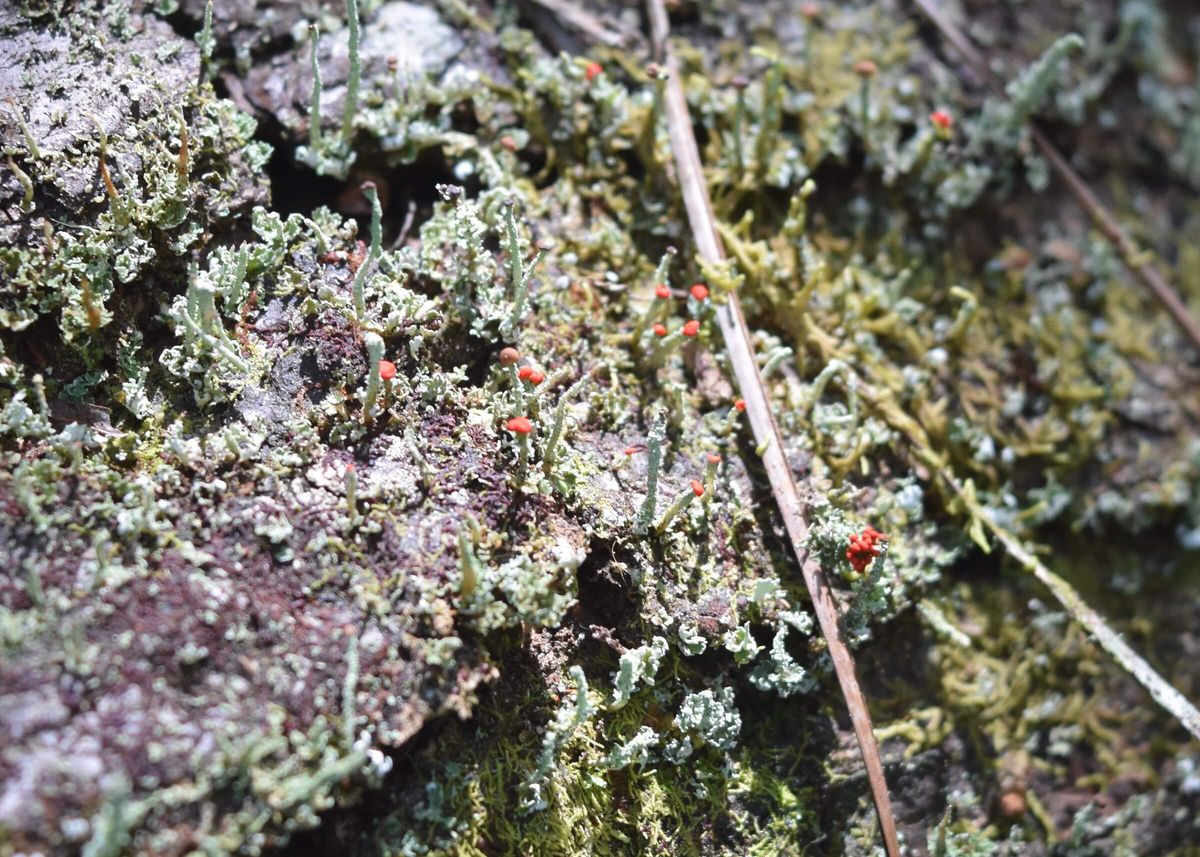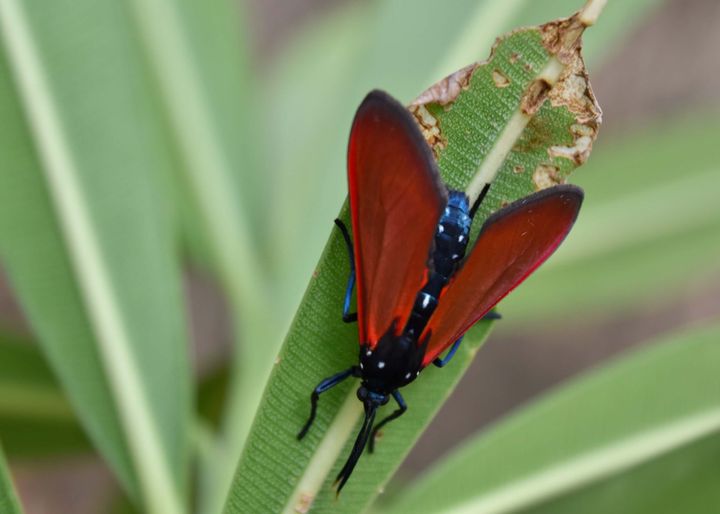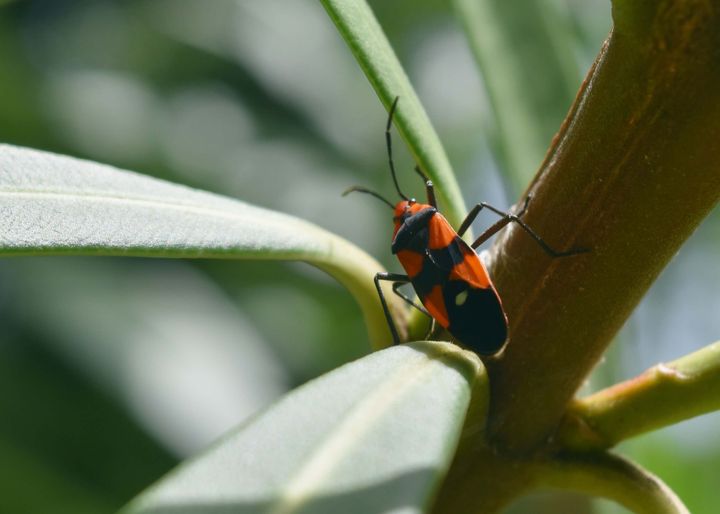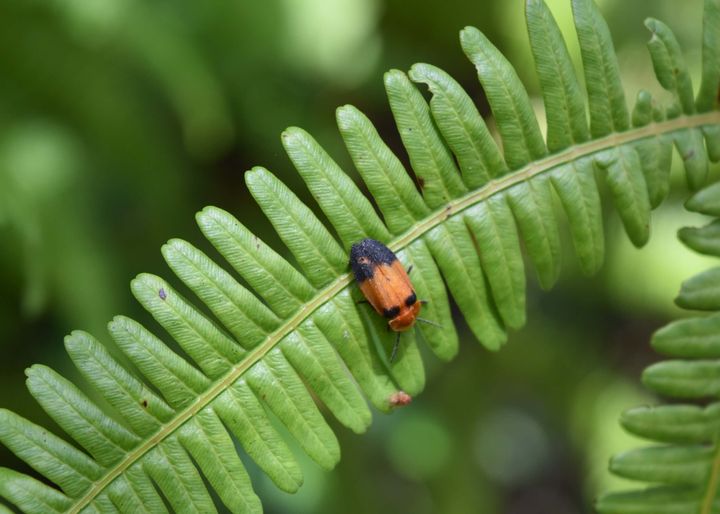British soldier lichen
Reserva Científica Ebano Verde, Dominican Republic.

| Species | Genus | Family |
|---|---|---|
| Cladonia cristatella | Cladonia | Cladoniaceae |
| Order | Class | Division |
| Lecanorales | Lecanoromycetes | Ascomycota |
Like other lichens, the British soldier lichen is composed of two different organisms—in this case, an alga and a fungus—living in symbiosis. The fungus, also called Cladonia cristatella, provides minerals and a structure that helps protect the alga from the elements. The alga, Trebouxia erici, uses photosynthesis to turn the sun’s energy into food it shares with the fungus. Some scientists see the relationship as mutualism, in which both organisms benefit. Others consider it controlled parasitism, with the alga depending on the fungus to thrive. Yet others think of it as a form of farming, in which the fungus cultivates the alga as a food source.
This little lichen grows in a wide variety of habitats, but is most often found around trees and on dead wood. Although some insects, slugs, and snails might nibble on it, it contains chemicals that tend to dissuade animals in search of a meal. Like other lichens, the British soldier goes dormant when water is scarce, so it can thrive in places where precipitation is unpredictable and moisture is intermittently unavailable. When water is scarce the green color fades, but the lichen brightens up again as soon as it gets damp enough for the alga to start photosynthesizing. This on-again, off-again mode of operation means lichens grow slowly. But it also means they can thrive in environments where plants cannot. The British soldier lichen has been found through much of northeastern and north-central Minnesota as well as in the Twin Cities area, with a few reports from the south-central part of the state.
About that red cap: the British soldier lichen’s red tops are spore-producing bodies called apothecia. Although these structures make and spread viable spores, the spores don’t carry the alga with them and so are unable to produce new British soldier lichens. The lichens spread when bits are broken off and carried to a new site by wind, gravity, or animals. Some scientists think the red pigment helps protect the spores from sun damage or serves as a warning to keep animals from eating it. Others suspect the opposite—that it attracts herbivores that can then help spread the spores.
Lichens are known for manufacturing complex chemicals. Although the precise function is unknown, scientists think the chemicals could help protect them from plant-eating animals as well as from damage by sunlight.[1]



